Would you like to know how to tell the difference between rooks and carrion crows and how to recognize a young rook? Then read our profile on this magnificent crow.
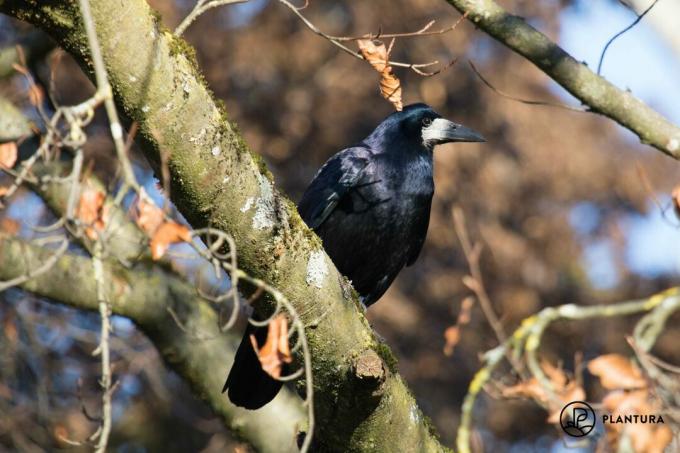
The Rook (Corvus frugilegus) is often used with the well-known carrion crow mistaken. The two wild birds are different species, some of which differ greatly in their breeding biology and in other areas of their lives. As the name suggests, rooks prefer to stay in agricultural areas. There they can often be observed in large swarms on fields in search of food. How to clearly recognize the rook and what else you need to know about the crow bird can be found here in our large species portrait.
"Contents"
- Rook: Wanted Poster
-
How to recognize the rook
- How does the rook call sound?
- How do rooks and carrion crows differ?
- How do you recognize a rook fledgling?
- What do rook eggs look like?
- What habitat does the rook prefer?
- Where does the rook build its nest?
- When is the rook breeding season?
- Where does the rook spend the winter?
-
Supporting the rook in the garden: That's how it works
- What do rooks eat?
- How can you support the rook additionally?
Rook: Wanted Poster
| size | 41-49cm |
| Weight | About 500g |
| breeding season | March – June |
| lifespan | Up to 20 years |
| habitat | Agricultural areas, settlements |
| feed preference | Seeds, insects, berries and fruit |
| threats | Decline in food and habitat, driven out by humans |
How to recognize the rook
Rooks can grow up to 50 cm tall and are characterized by their pitch-black, shiny plumage. Their beak is long, strong and dark at the tip. The base of the beak, on the other hand, is light and featherless and contrasts with the dark plumage. The bright beak can also be seen in flight and from a distance. Unfortunately, male and female rooks cannot be distinguished visually.

How does the rook call sound?
Like all crow relatives, the rook has a rather croaky, unmelodious call. Compared to the carrion crow, however, its voice sounds even hoarser and throaty - similar to a sharp "Grääh". At colony sites and when large flocks gather, the animals' cries can sometimes be deafening.
This is what the rook call sounds like:
How do rooks and carrion crows differ?
The best way to tell rooks and carrion crows apart is to look at the animal's beak. Because while rooks have an unfeathered, light-colored beak base, that of carrion crows is covered with fine black feathers. This makes the carrion crow's face appear uniformly dark.
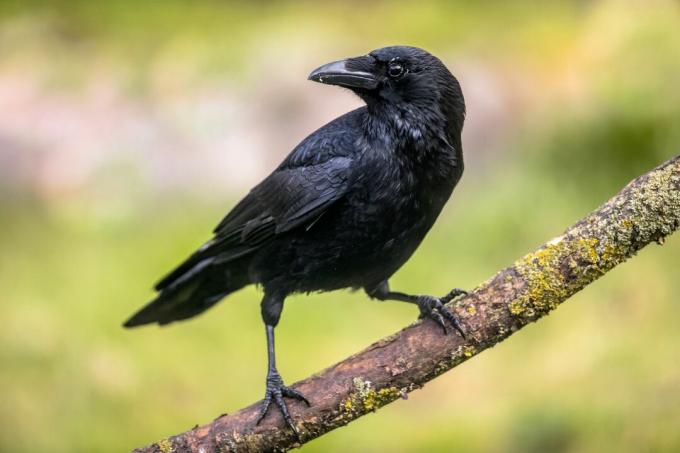
How do you recognize a rook fledgling?
Young rooks can be recognized by the fact that they still have fine feathers at the base of their beak and the beak therefore does not yet appear as light and large as that of the adult animals. This trait also makes young rooks easily confused with carrion crows; however, their beak is pointed and straight, while that of carrion crows is strong and arched.
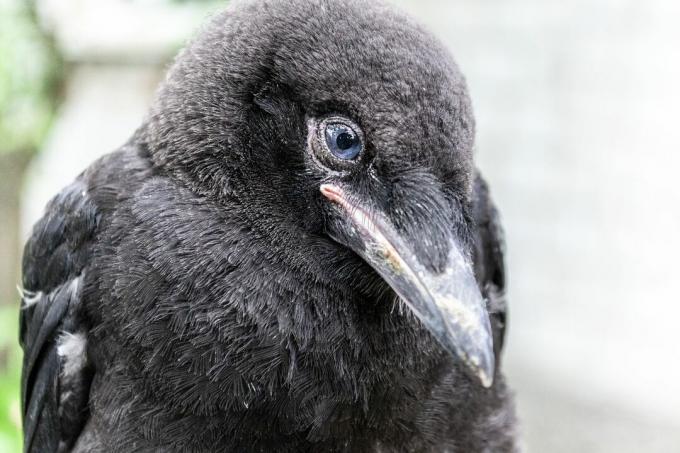
What do rook eggs look like?
Rook eggs are about 4 cm in size, have a greenish base color and are sometimes heavily covered with dark spots. The eggs are laid in a large nest made of twigs, the hollow of which is padded with a wide variety of materials.
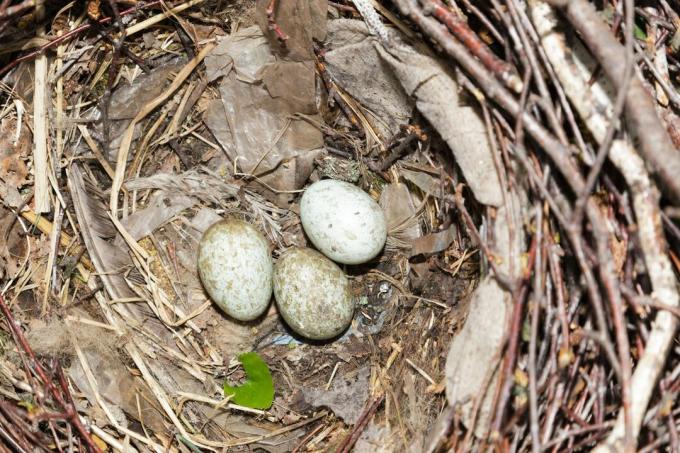
What habitat does the rook prefer?
Rooks prefer open terrain where they can forage in short vegetation. In most regions, they are therefore dependent on man-made agricultural land. However, just as important as the actual areas are suitable nesting structures in the immediate vicinity, for example individual groups of trees or small patches of forest.
Where does the rook build its nest?
The rook builds a free-standing nest in the tops of tall trees. Both breeding partners are involved in building the nest itself. Rooks are also very social birds and like to breed in large colonies. It is not uncommon for up to several hundred nests to be observed in the surrounding trees at a colony site.
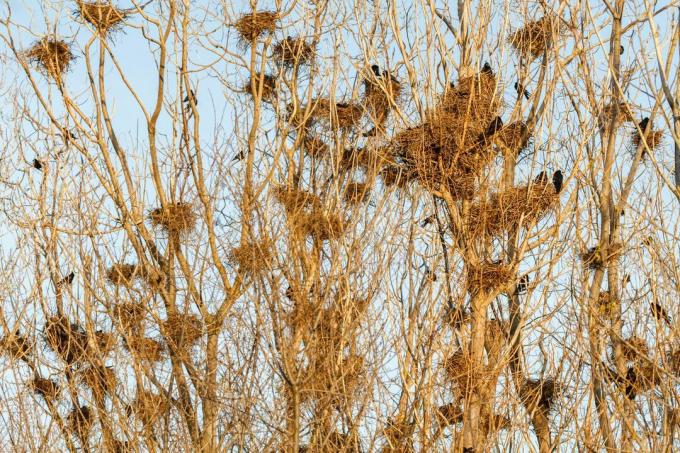
When is the rook breeding season?
The breeding season of rooks lasts from March to June. During this time, most rooks brood only once. Once a breeding pair has found each other, they usually have a lifelong, monogamous marriage.
The eggs are incubated by the female for between 16 and 18 days. During this time, it rarely leaves the nest and is provided with food by the male. The young rooks then hatch and are fed by both parents in the nest. After about four weeks, the young birds are big enough to leave the nest and start exploring. Even after this point in time, they are still supported by their parents in their search for food for a while.
Where does the rook spend the winter?
Rooks are partial migrants. About half of the populations settled in Central Europe move to warmer regions, the other half remain in their breeding areas. The migrating individuals are short-distance migrants and only move about 1000 to 2000 kilometers from their breeding grounds. The remaining animals are also in winter in smaller and larger flocks and look for food together in the barren landscape.

Supporting the rook in the garden: That's how it works
The likelihood of a colony of rooks settling in your garden is relatively small. Nevertheless, isolated animals can sometimes venture into the garden in search of food. In the following you will find out how you can prepare for the sociable birds and what you need to bear in mind.
What do rooks eat?
Rooks feed on both plant and animal food. Especially in spring and summer, the birds hunt for worms, snails, insects and other small animals in the low vegetation of fields and meadows. In the late year and winter they eat mainly seeds - mainly grain.

Rooks can also be found at feeding stations, where they eat grains of various sizes. You can offer ours, for example Plantura litter, which supports many garden birds in winter with its carefully selected ingredients rich in energy and nutrients.
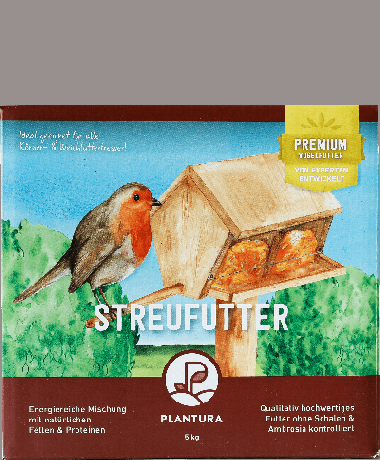
Plantura litter for wild birds
Fat and protein rich litter
for winter feeding of wild birds,
for strengthened & active birds
How can you support the rook additionally?
In addition to birdseed, you can also create natural food sources for birds in your garden. With native flowers, ponds and shrubs, you can support birds directly with seeds and berries and indirectly by creating habitats for insects and other small animals. A insect friendly garden is therefore also bird-friendly at the same time.
In order not to negatively influence the range of insects, you should also avoid using chemical sprays - especially since these can even poison birds through the food chain. Instead, animal garden visitors are happy about a touch of wildness and a lot of native diversity in our gardens.
Another garden bird that is happy about a rich range of insects in summer and can still be observed in winter is the treecreeper. You can find out how you can recognize this little songbird and what else you can do for it in our next species portrait.
...and receive concentrated plant knowledge and inspiration directly in your e-mail inbox every Sunday!



